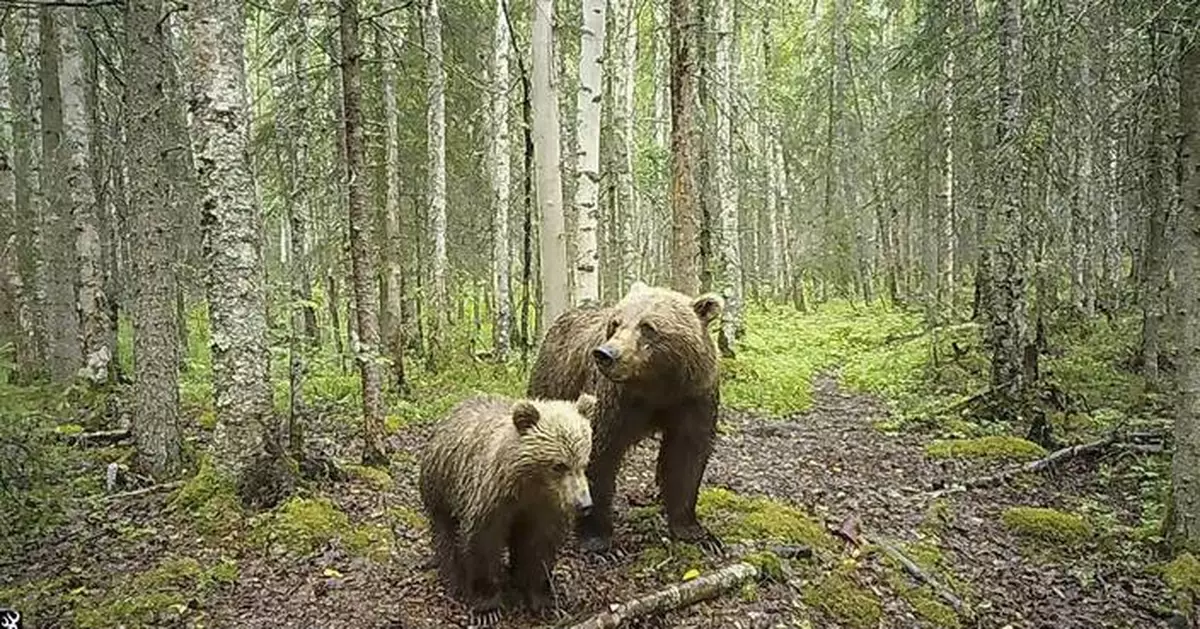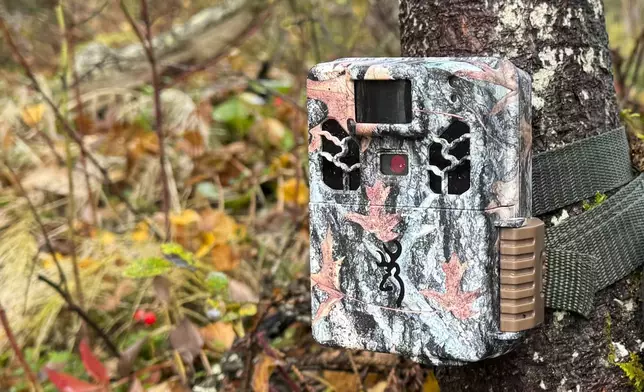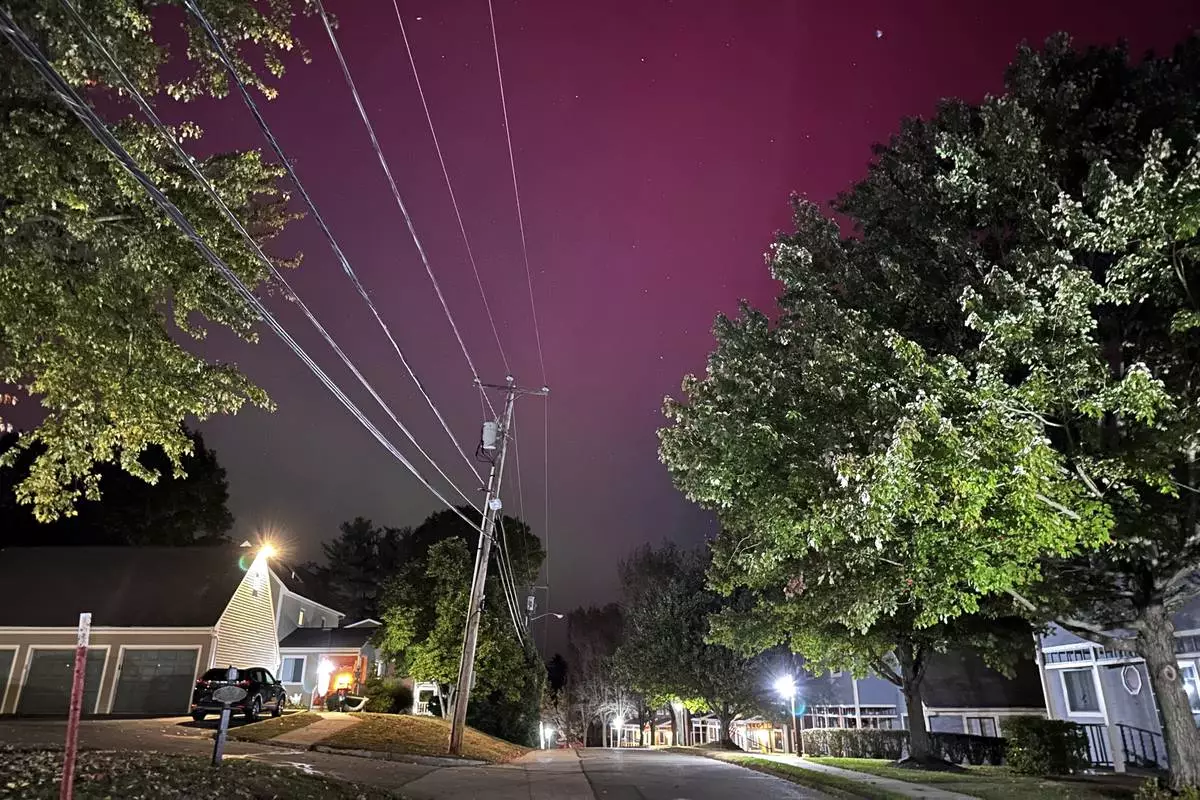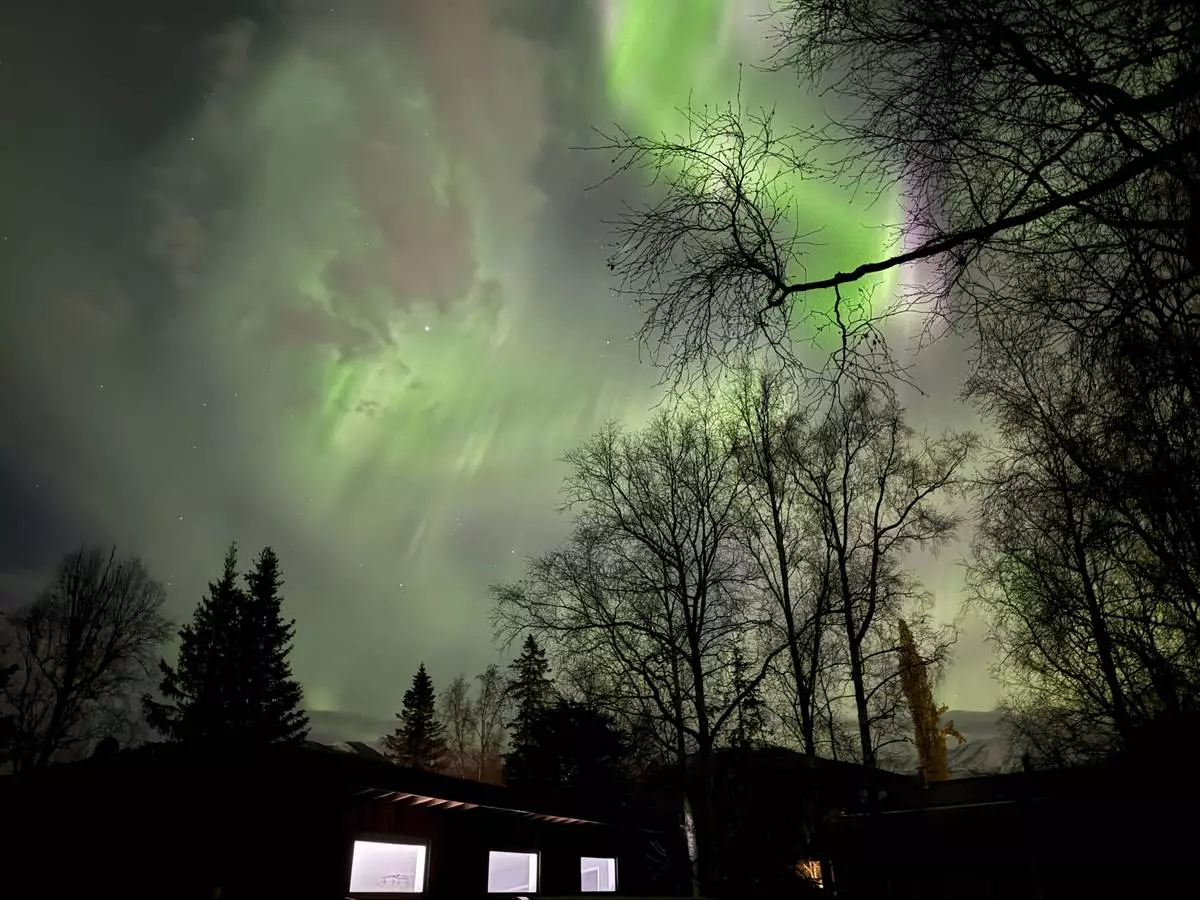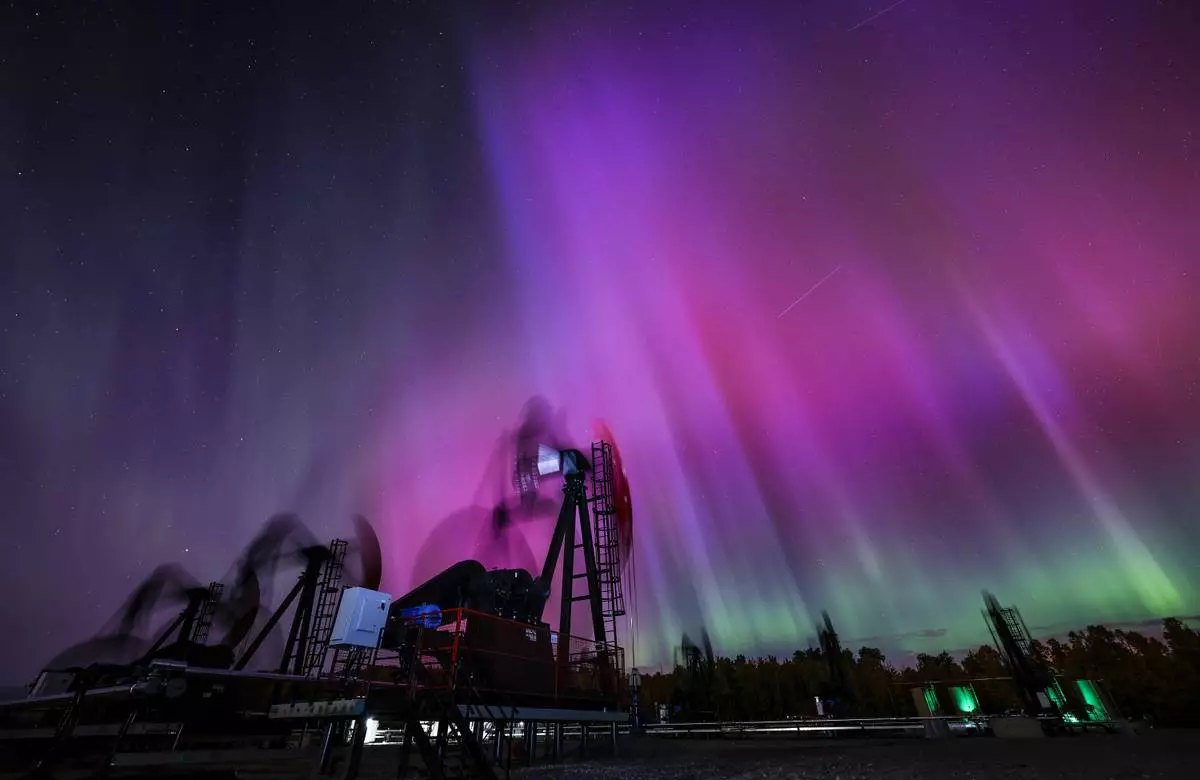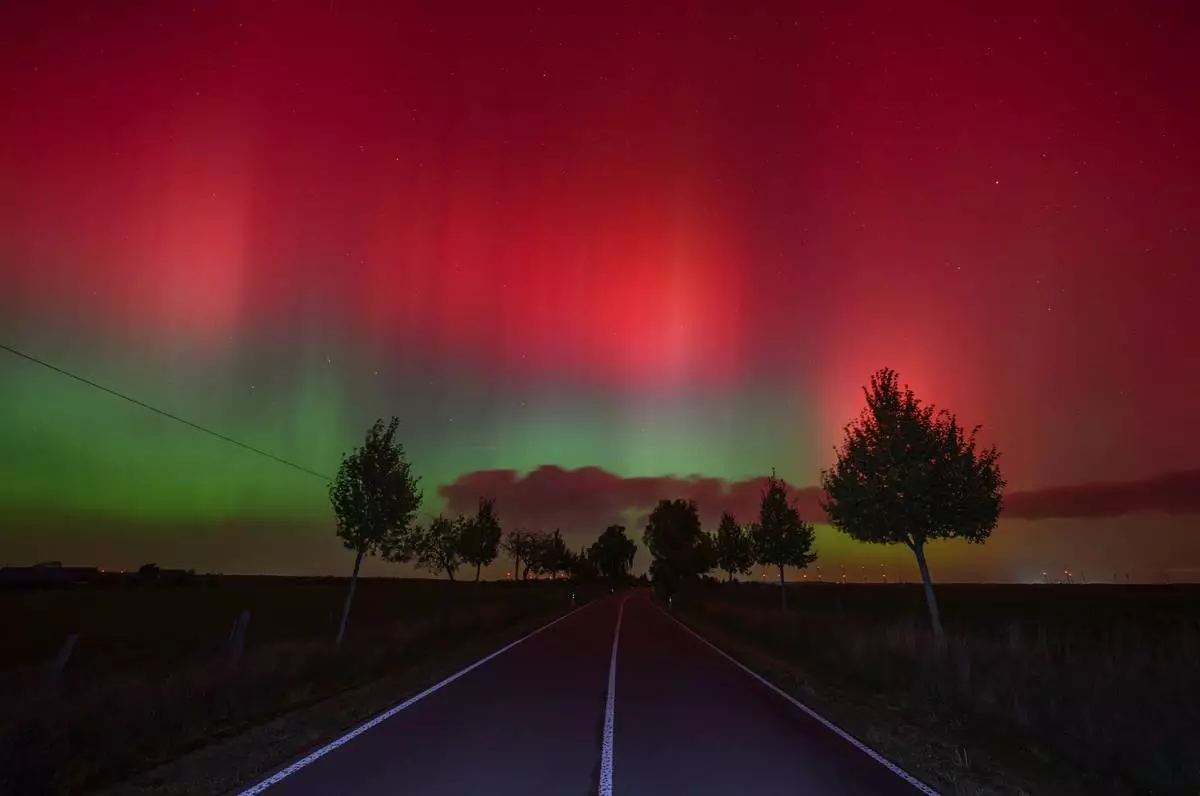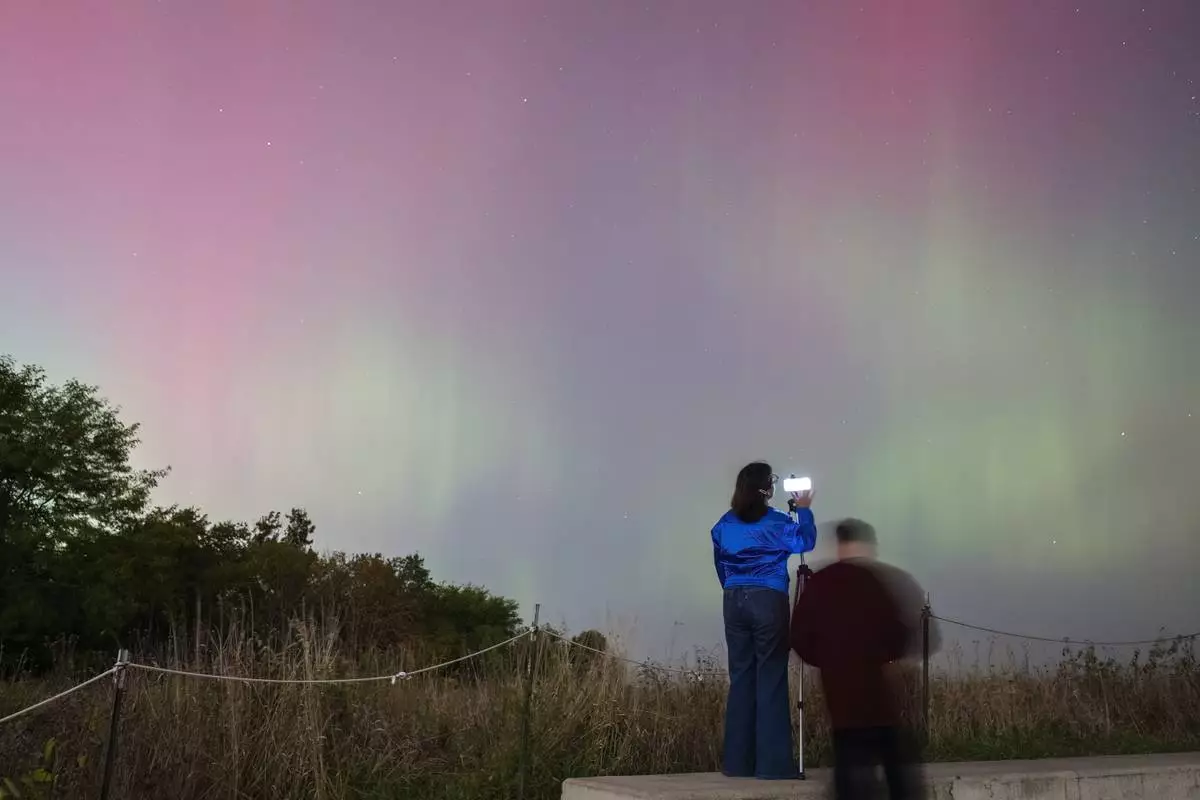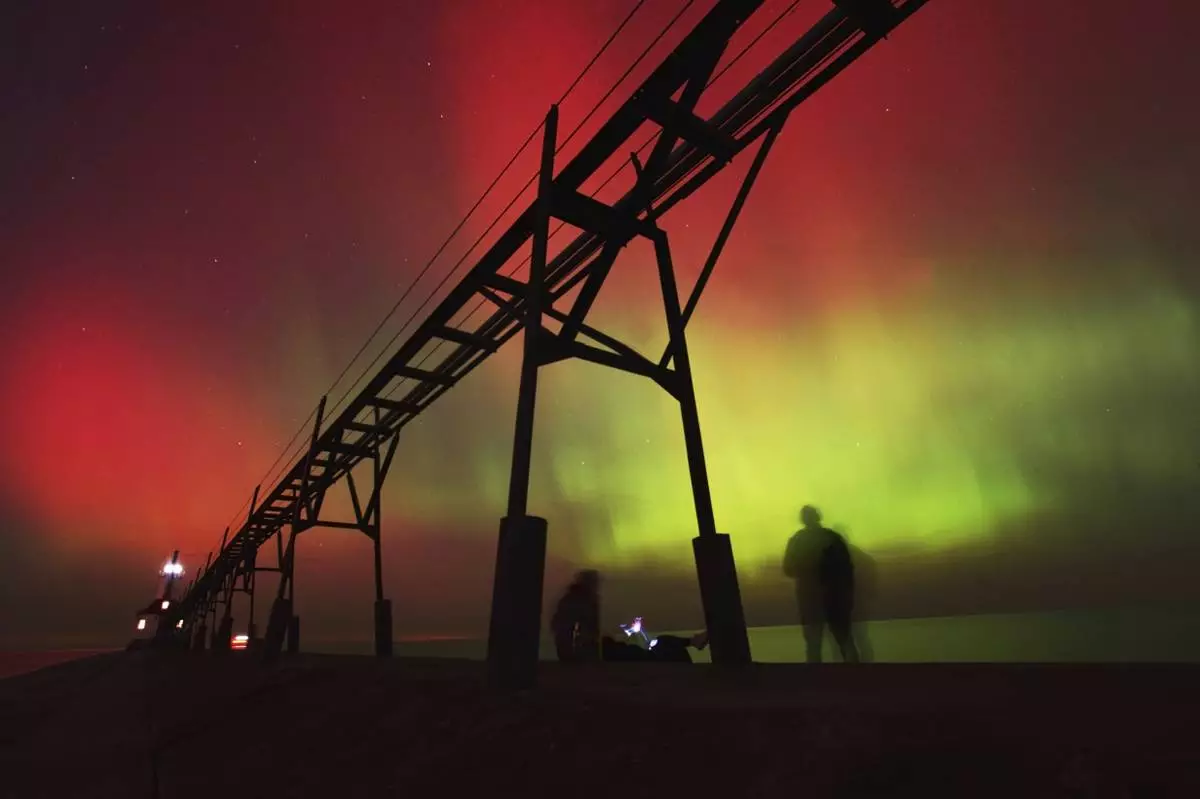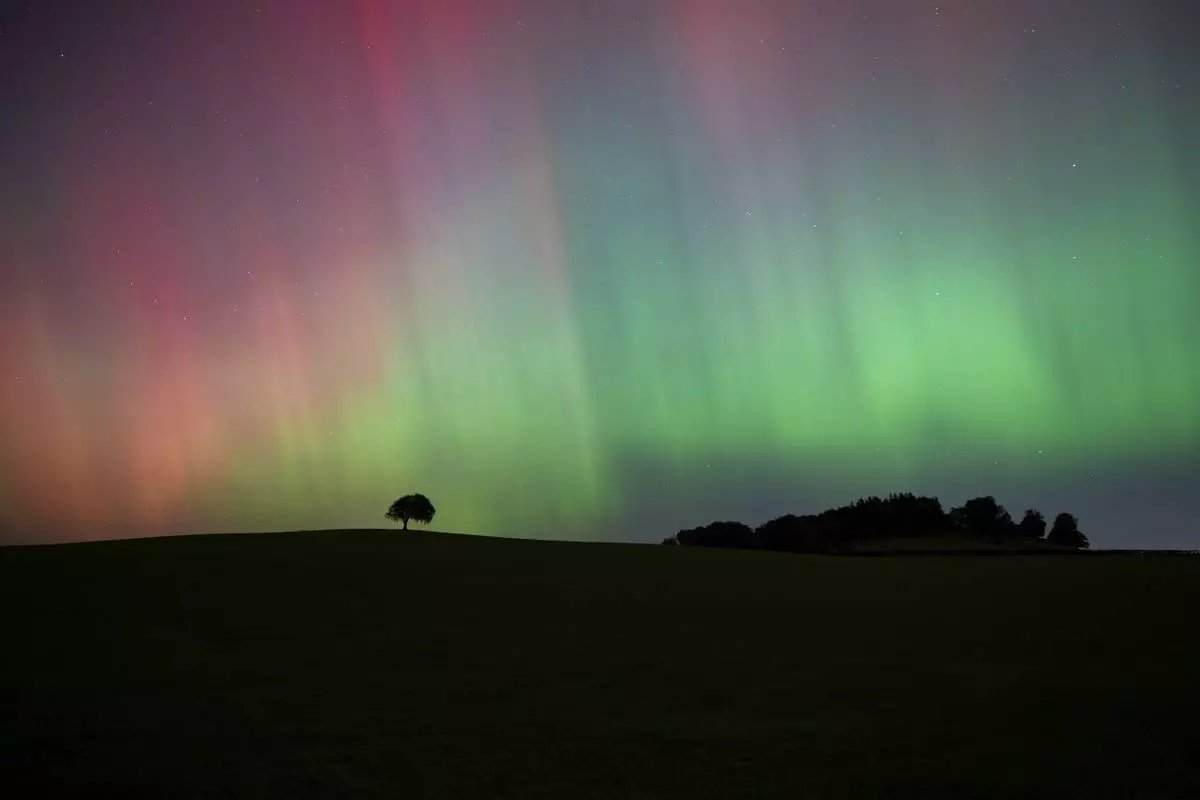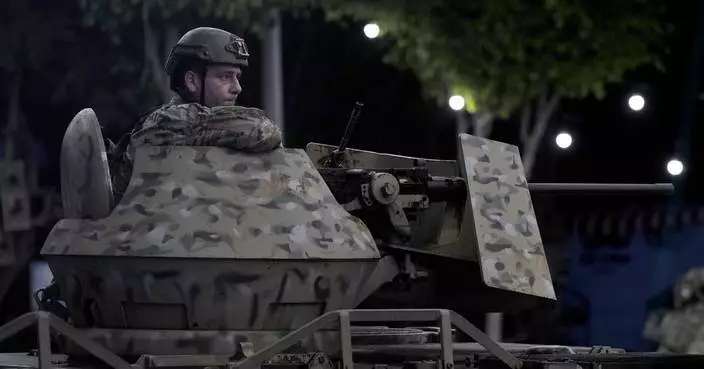ANCHORAGE, Alaska (AP) — Millions of people worldwide tuned in for a remote Alaska national park’s “Fat Bear Week” celebration this month, as captivating livestream camera footage caught the chubby predators chomping on salmon and fattening up for the winter.
But in the vast state known for its abundant wildlife, the magical and sometimes violent world of wild animals can be found close to home.
Within half a mile of a well-populated neighborhood in Anchorage, the state’s biggest city, several trail cameras regularly capture animals ranging in size from wolverines to moose. And a Facebook group that features the animals caught on webcams has seen its number of followers grow nearly six-fold since September, when it posted footage of a wolf pack taking down a moose yearling.
But it’s not all doom-and-gloom videos on the page, and the actual death of the moose calf was not shown. The group, named Muldoon Area Trail Photos and Videos, also features light-hearted moments such as two brown bear cubs standing on their hind legs and enthusiastically rubbing their backs against either side of a tree to mark it.
Ten cameras capture lynx, wolves, foxes, coyotes, eagles, and black and brown bears — "just whatever is out here,” said Donna Gail Shaw, a co-administrator of the Facebook group.
In addition to the 290,000 or so human residents of Anchorage, nearly 350 black bears, 65 brown bears and 1,600 moose also call it home.
Joe Cantil, a retired tribal health worker, said the idea for the page started when looking down at the vast open lands of Alaska from an airplane on a hunting trip near Fairbanks.
“You’re out in the middle of nowhere, so you see animals acting however they act whenever we’re not around,” he said.
He later met wildlife officials in the Anchorage park conducting an inventory of predators. He saw them set up a trap and three webcams where a moose had been killed.
“When I saw that, I thought, ‘Yeah, I can do that,’” he said.
Cantilset up a low-tech camera, and caught his first animal on it, a wolverine, fueling a passion that led to the creation of the Facebook page in 2017.
Then, while hiking, he met Shaw, a retired science education professor and associate dean of the College of Education at the University of Alaska Anchorage.
Shaw was intrigued by his game cameras and began bugging him to see the footage.
“Well, he finally got tired of me pestering him and one day he said, ‘You know, you can get your own camera,’ and so that started my hobby," said Shaw, a native of Texas.
She started by strapping a single $60 camera to a tree. Now she has nine cameras, seven of which are active in Far North Bicentennial Park, a 4,000-acre (1,619-hectare) park stretching for miles along the front range of the Chugach Mountains on the east side of Anchorage.
Her cameras are set up anywhere between a quarter-mile to a half-mile (402 meters to 804 meters) of the Chugach Foothills neighborhood and she frequently posts to the Facebook group page. Cantil also posts videos from his three cameras.
“I knew there was wildlife out here because I would occasionally run into a moose or a bear on the trail, but I didn’t know how much wildlife was out here until I put the cameras on it,” Shaw said.
She replaces batteries and storage cards about once a week, walking into the woods to do so armed with an air horn to announce her presence, two cans of bear spray and a .44 caliber handgun for protection.
Many of the page’s followers are Anchorage residents looking for information about which animals may currently be roaming around the popular trail system. Other users join to see what the cameras capture, including people from other states who “enjoy looking at the wildlife that we have here,” she said.
Shaw said that every few weeks, her cameras catch a wolf or two — and sometimes even a pack. This year she was surprised when a pack of five wolves came by, walking quietly in a single file.
Last month, while she collected memory cards, she saw moose fur on the ground across the creek from two of her cameras. After she spotted what looked like a roughed-up patch of dirt where a bear might bury its kill, she assumed it was another moose attacked by a black bear, similar to what happened earlier not too far away.
But when she checked the memory card, it instead showed the wolves taking down the moose yearling as the moose’s mother attempted to protect her offspring by trying to kick the wolves away with her long legs.
Now, the demand for the page is growing, but Shaw said she's done adding cameras.
“I think I'm at my camera max,” she said. “Nine is enough!”
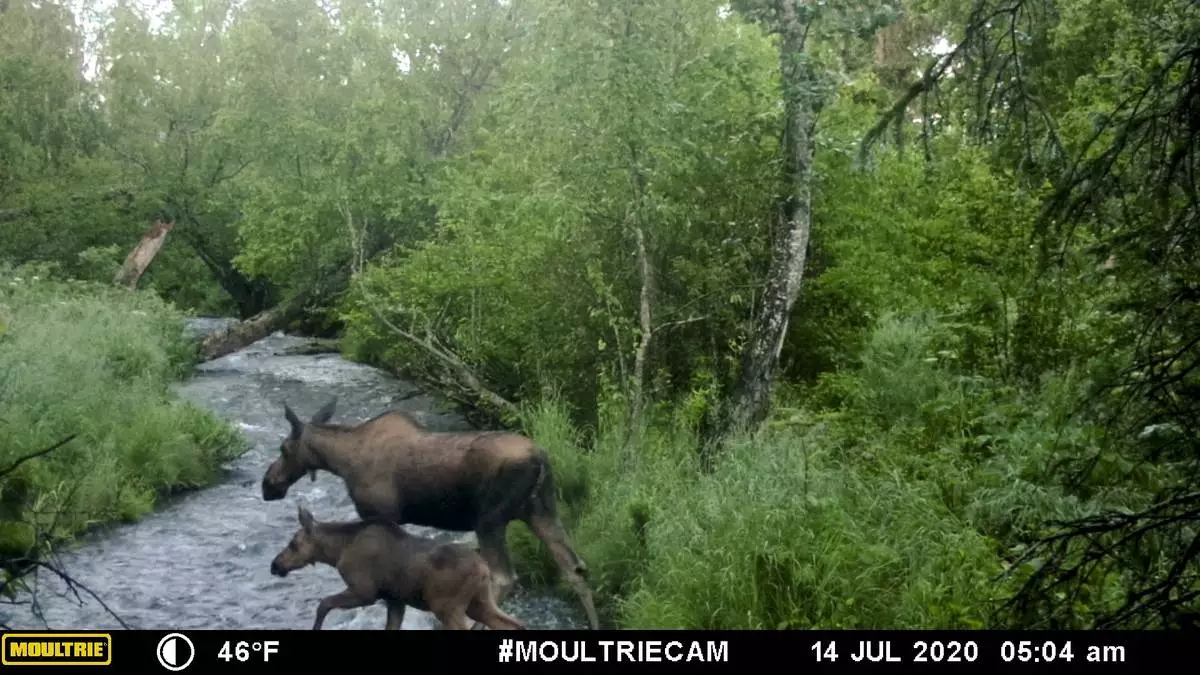
This image made from video provided by Donna Gail Shaw shows a view from a trail camera of a moose and calf on July 14, 2020, in Anchorage, Alaska. (Donna Gail Shaw via AP)
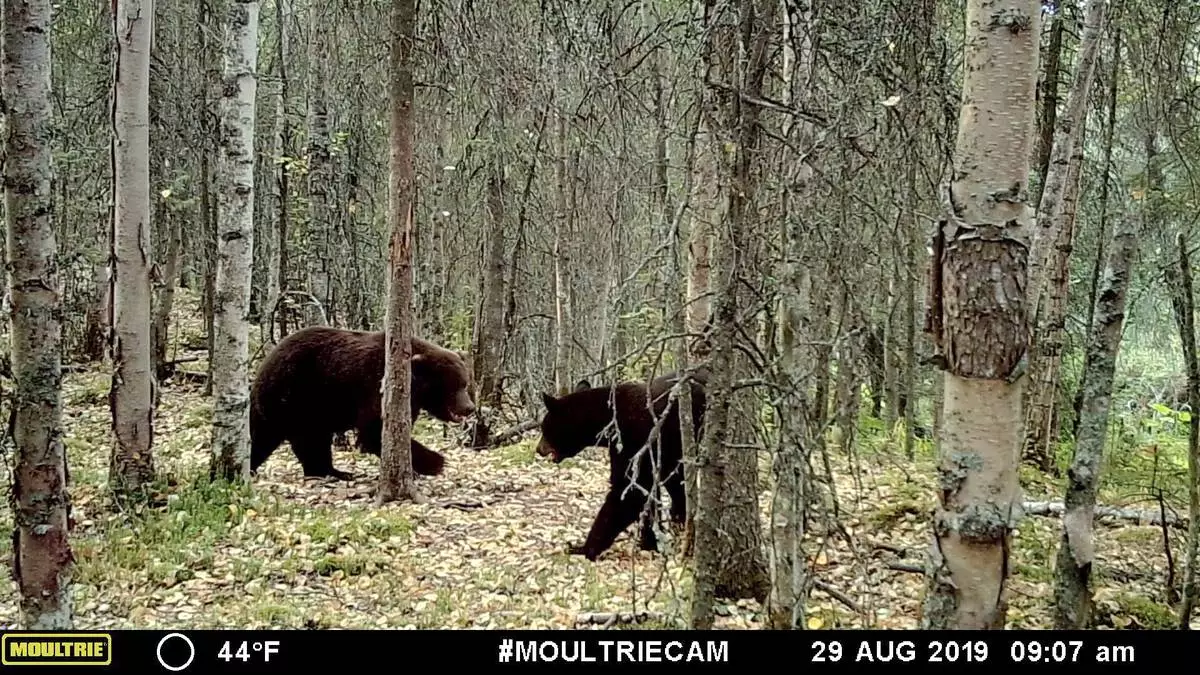
This image made from video provided by Donna Gail Shaw shows a view from a trail camera of a brown bear and a black bear on Aug. 29, 2019, in Anchorage, Alaska. (Donna Gail Shaw via AP)
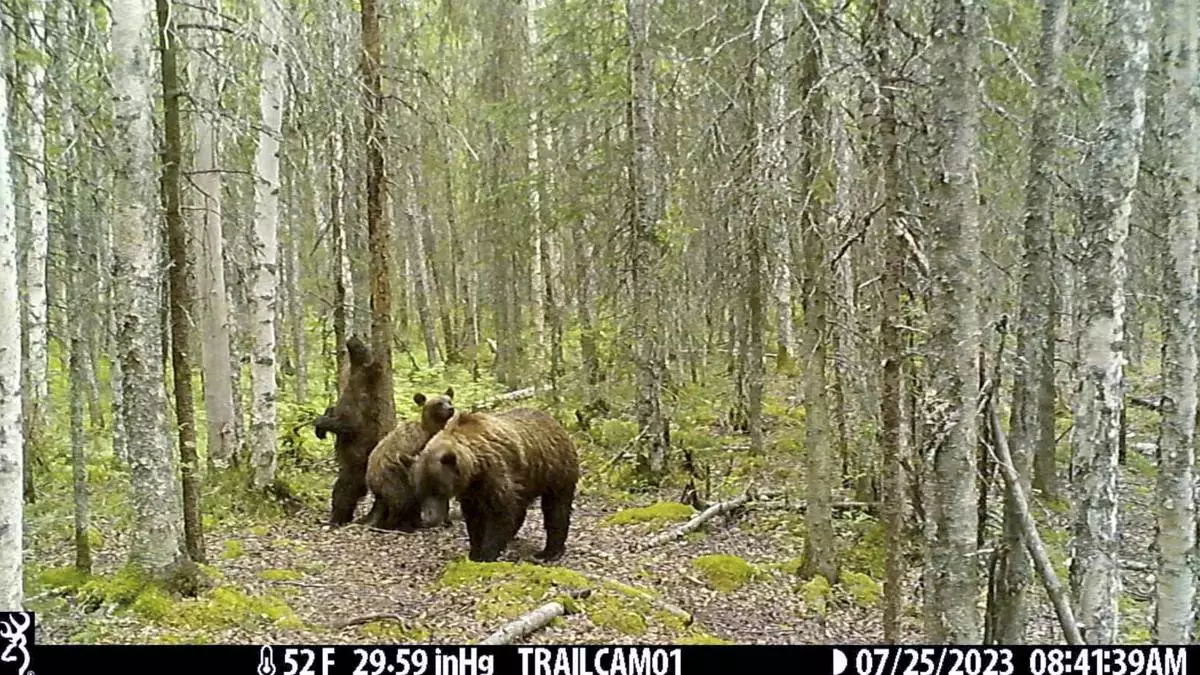
This image made from video provided by Donna Gail Shaw shows a view from a trail camera of a brown bear and cubs on July 25, 2023, in Anchorage, Alaska. (Donna Gail Shaw via AP)
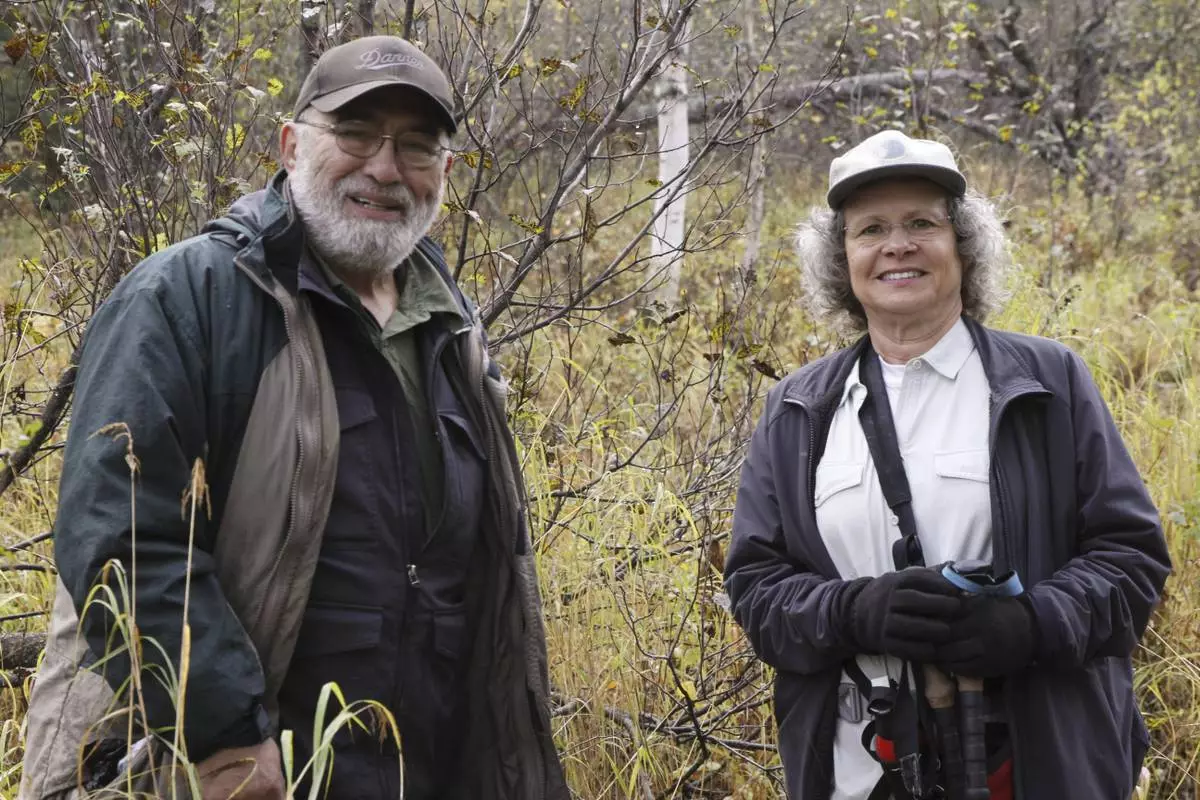
Joe Cantil, left, and Donna Gail Shaw, pose for a photo on Sept. 26, 2024, in Anchorage, Alaska. The two are the co-administrators of a Facebook group that features wildlife videos captured on their trail cameras very near a populated Anchorage neighborhood. (AP Photo/Mark Thiessen

A trail camera is set up on Sept. 26, 2024, near a populated neighborhood of Anchorage, Alaska. (AP Photo/Mark Thiessen)
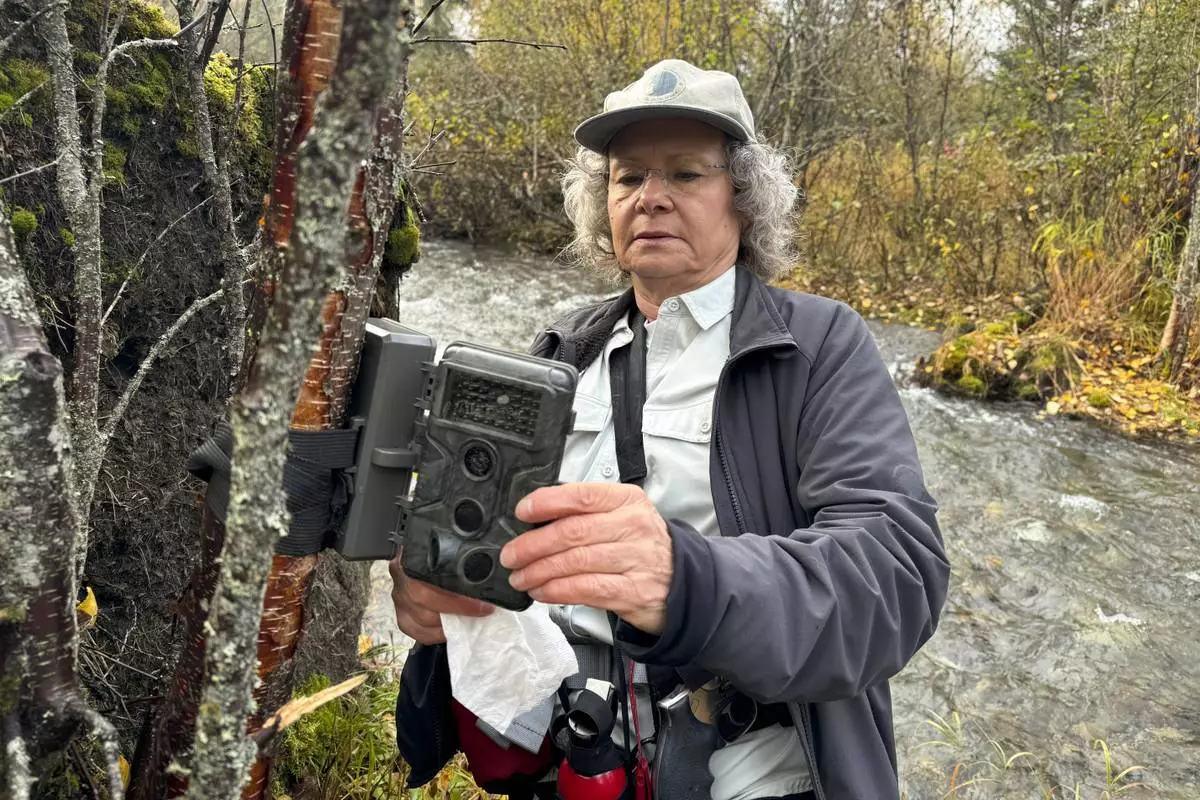
Donna Gail Shaw checks her trail camera on Sept. 26, 2024, near a populated neighborhood of Anchorage, Alaska. (AP Photo/Mark Thiessen)
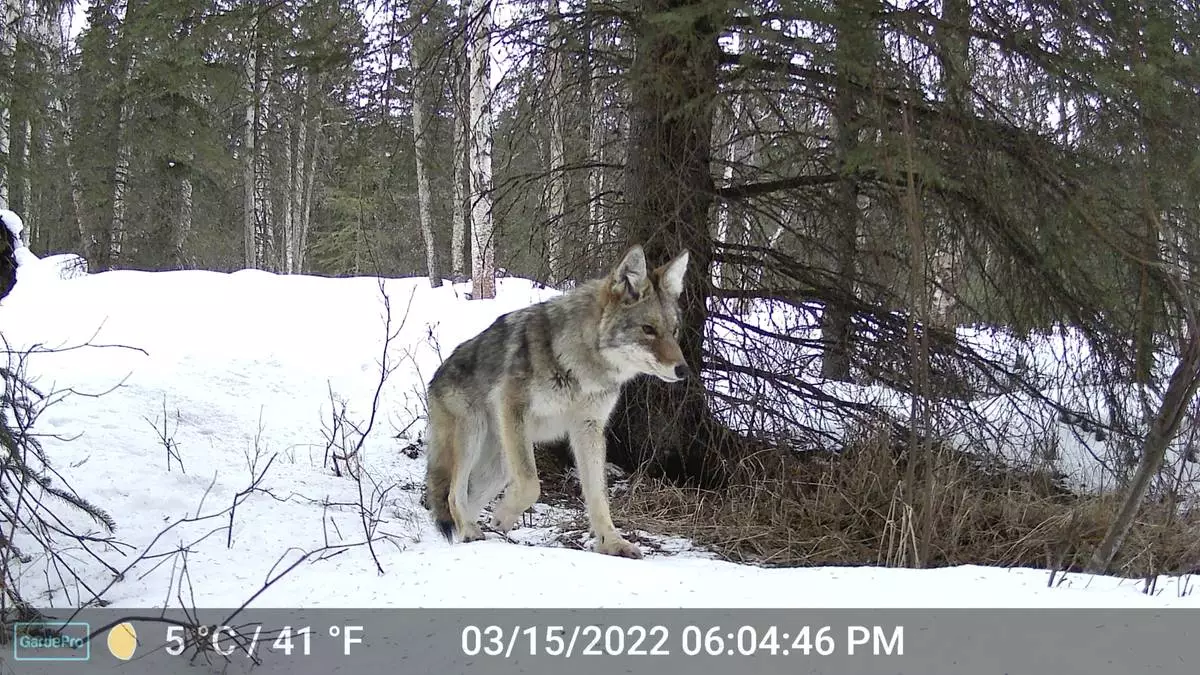
This image made from video provided by Donna Gail Shaw shows a view from a trail camera of a coyote on March 15, 2022, in Anchorage, Alaska. (Donna Gail Shaw via AP)
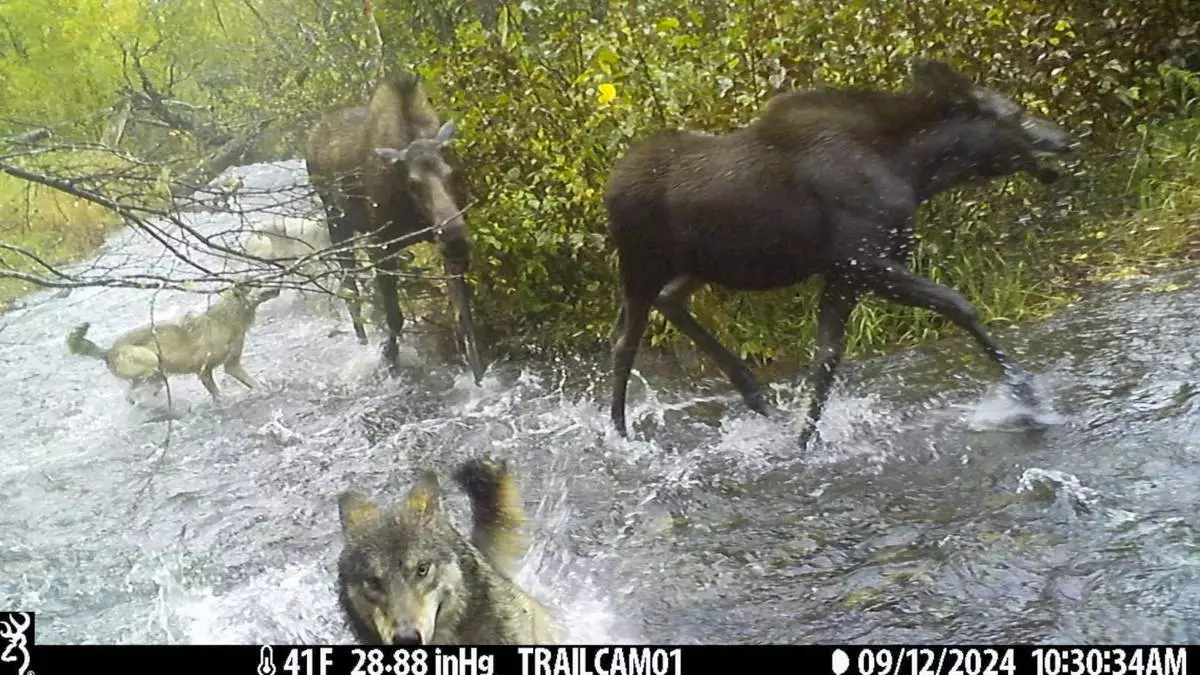
This image made from video provided by Donna Gail Shaw shows a view from a trail camera of wolves attacking moose on Sept. 12, 2024, in Anchorage, Alaska. (Donna Gail Shaw via AP)
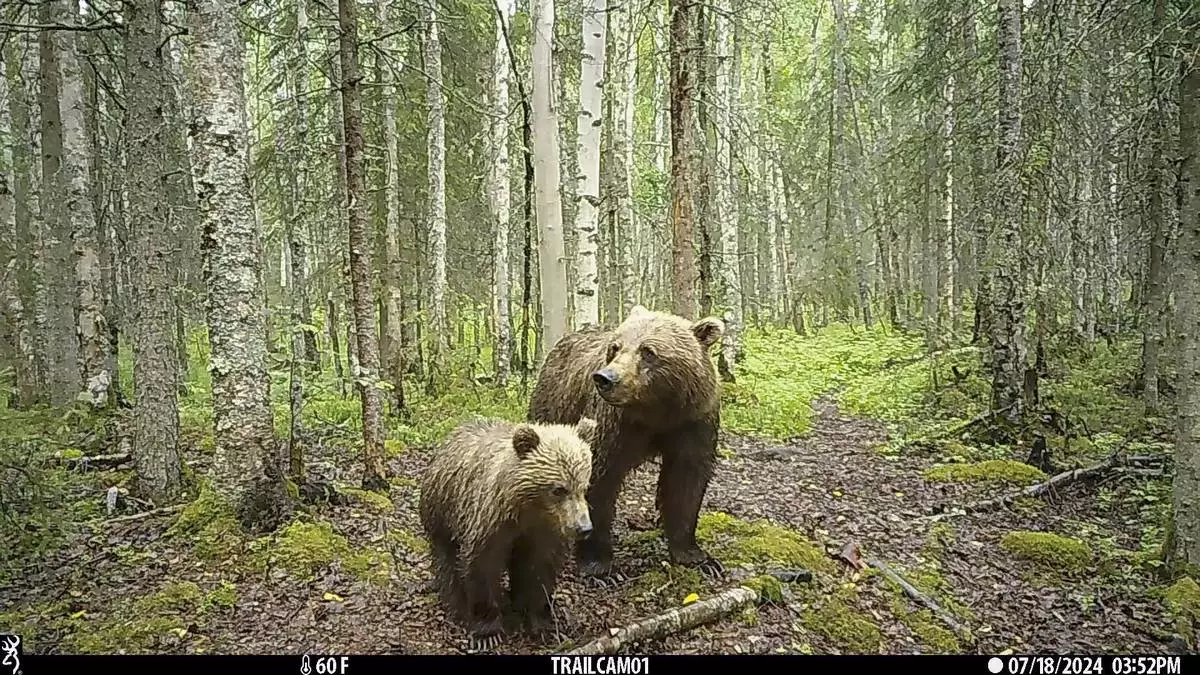
This image made from video provided by Donna Gail Shaw shows a view from a trail camera of a brown bear and cub on July 18, 2024, in Anchorage, Alaska. (Donna Gail Shaw via AP)


